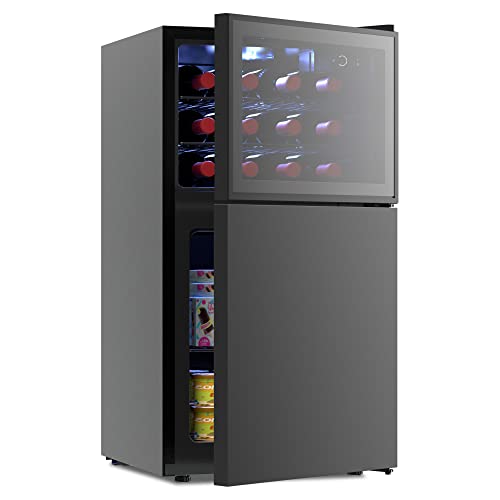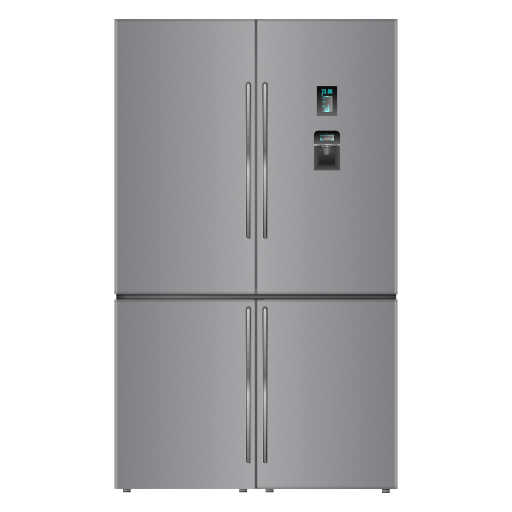You'll Be Unable To Guess Wine Fridge Cooler's Tricks
페이지 정보

본문
 The Benefits of a Wine Fridge Cooler
The Benefits of a Wine Fridge CoolerA wine fridge cooler helps keep bottles at the right temperature for maturing and reaching their full potential. A well-designed wine fridge controls humidity levels to prevent corks from drying out and getting oxidized.
Opt for a wine fridge with multiple temperature zones. This feature is ideal if you collect different types of slim wine refrigerator that have different needs for storage.
Compressor-Based Cooling
A wine fridge cooler makes use of compressor technology to keep your most loved wines at the ideal temperature for serving or storage. This kind of cooling system is frequently found in beverage refrigerators. It offers the same temperature throughout the refrigerator.
Freestanding or built-in wine refrigerators that use this cooling technology can be added to your kitchen, bar, wine cellar, or closet. They can be placed under counters or recessed, and in many cases come with cabinet front ventilation so that they be seamlessly integrated with your other kitchen appliances.
In addition to ensuring the correct temperature, wine refrigerators with this cooling technology provide other vital functions that are essential to store wine. For instance, they could be equipped with a humidity control system that monitors the air in the refrigerator and adjusts the water flow to ensure the wine bottles are properly humidified. This prevents oxidation which can alter the taste of the wine.
Certain wine coolers feature triple or even dual temperature zones, so you can store various types of wine at the optimal temperature. This is a great choice for those who like to serve both white and red wines or wish to separate their wine collection into various storage categories.
Some wine refrigerators employ this type of cooling to create a UV-resistant door that protects the wine from harmful UV radiation.
Wine refrigerators with this technology tend to be quiet and produce no vibrations. This is because they do not utilize liquid refrigerant and therefore don't have moving components that spin or vibrate when running. This helps to reduce vibrations that could cause loose connections to hardware and other issues with the internal components of the wine fridge cooler (click through the next webpage). This reduces noise and keeps your wine tasting good wine fridge.
Thermoelectric cooling
Thermoelectric cooling is a different kind of technology from compressor-based units. Instead of refrigerants, thermoelectric coolers rely on Peltier effect to keep wine bottles cool. The Peltier effect occurs when an electric current is passed through two metal pieces that are connected which causes one side to heat up while the other cools down. This difference in temperature is what allows the cooler to maintain a a cool environment inside of the cabinet.
In the majority of instances, a heat sink is utilized to distribute cold air throughout the cabinet. It is typically made of aluminum that has been electrolyzed to increase its surface area and assist with the dissipation of heat. Fans are located on either side of the heat sink in order to circulate air and keep the temperature constant.
This technology is environmentally friendly. Thermoelectric coolers are eco-friendly because they don't utilize refrigerants. They also consume far less energy, and are typically less expensive to run than compressor-based models.
However, it is important to know that thermoelectric wine coolers aren't as effective in keeping wine bottles at their optimal temperature as compressor units. They are not able to reach the required temperature. They also require more maintenance since they are constantly running.
Thermoelectric wine fridges are silent and environmentally friendly. This makes them a fantastic option for those who live in homes or restaurants where it is crucial to maintain the atmosphere of the space. They are great for living rooms, where people entertain guests or like to enjoy a glass wine alone. They can be set up anywhere in the house or restaurant and without causing any disturbance. They don't have any compressors or motors that are noisy.
Humidity Control
Wine is a sensitive product to environment and requires precise conditions to age correctly. Temperature and humidity are crucial in this process to ensure cork integrity and quality over time. A wine fridge maintains an ideal temperature range and controls humidity to ensure a perfect ageing process.
The ideal humidity for wine storage is between 50 and 70 percent. If the humidity drops the wine will lose its taste and develop oxidation. Mildew and mold can thrive in extreme humidity, which can damage labels or alter the quality of cork. Wine refrigerators create an environment that discourages mold and mildew development, thereby protecting the appearance and taste of wines.
Many wine refrigerators come with humidity control systems that control and maintain the proper levels of humidity. These systems have an inbuilt humidity control system which monitors and adjusts humidity settings automatically in order to maintain the desired range.
Additionally, certain wine fridges have internal fans that facilitate the circulation of air and stop pockets of humid or warm air from forming. This helps maintain constant conditions throughout the wine storage area and reduces energy consumption by minimizing fluctuations in the temperature of the fridge's operation.
The majority of wine refrigerators have doors with solid or double-paned glass that provide insulation and protection from harmful UV rays that can cause degradation of wine compounds and alter their flavor. Some also have vibration reduction mechanisms that minimize disturbances that can cause sediment to break in older bottles and disrupt the aging process.
If your wine refrigerator has been operating in inadequate conditions for a prolonged period of time, you might require additional moisture. The short-term solution is to use moisture absorbers and air dehumidifiers comprised of crystals or mineral salts to absorb the water vapour in the air. These devices should be emptied regularly and replaced. If you're looking for a long-term solution, you can install an active humidification system that combines an atomizer for water and a water tank.
Storage Capacity
A wine fridge is an asset if enjoy wine regularly and want to keep a few bottles on hand for any unplanned or unexpected occasions. These devices recreate the optimal conditions of natural caves and cellars to allow your wine to develop their fullest flavors over time.
Wine is a delicate combination of various compounds that interact to create distinct flavors and aromas. The right storage conditions protect these qualities and stop premature aging, which can deprive the wine of its essence. In a typical fridge, temperature fluctuations may cause these molecules to break down, causing the flavors to diminish. In a beer wine refrigerator fridge, humidity control and constant temperatures avoid these problems.
In addition to ensuring optimal temperatures, wine refrigerators regulate humidity levels to stop corks from drying out and leakage. If a bottle of wine is stored in a dry location the labels may fall off and the wine will lose flavor. Wine fridges keep a humidity between 55 75% and 55%, which protects the integrity of the wine bottle and preventing oxidation.
These cooling systems often have internal fans to ensure uniform air circulation throughout the cabinet. This helps eliminate pockets of warm or humid air, and keeps the collection at a constant temperature. Additionally, many units have specialized shelving and racks that cradle bottles gently and securely. This protects the bottles from damage and helps you to organize your collection efficiently.
Certain wine refrigerator large refrigerators have dual temperature zones that are ideal for storing different kinds of wines at their ideal temperatures. Other features that are common to these fridges include UV-resistant doors as well as LED lighting. These features block harmful sunlight from reaching your wines, while keeping them easy to locate. Some wine refrigerators have carbon filters that help to eliminate the smell of air that can get through the corks of bottles and affect the taste of the wines.
Think about the size of your wine collection and the space you need to store it when shopping for fridges. The majority of wine coolers can be incorporated into cabinets or under counters and come in a variety of shapes and sizes. Some come with front venting which means they can be placed in smaller spaces. Some wine refrigerators have adjustable shelves, which allow you to fit bottles with unusual shapes.

- 이전글What NOT To Do With The Mobility Scooters Road Legal Industry 24.09.20
- 다음글Nine Things That Your Parent Taught You About Leather Couch With Chaise 24.09.20
댓글목록
등록된 댓글이 없습니다.
